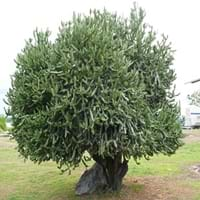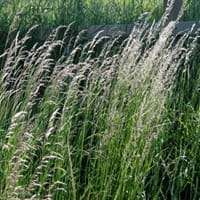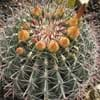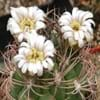Life Span
Perennial
Perennial
Type
Cactus or Succulent
Grass
Origin
Eastern Asia, India
Europe, Asia
Types
Not Available
Blue Oat grass
Habitat
Temperate Regions, Tropical regions
Cropland, gardens, Grassland, Roadsides
USDA Hardiness Zone
10-11
4-9
AHS Heat Zone
Not Available
Not Available
Sunset Zone
H1, H2, 24
1a, 1b, 2a, 2b, 3a, 3b, 4, 5, 6, 7, 15, 16, 17, 23, 24
Habit
Oval or Rounded
Clump-Forming
Flower Color
Yellow, Yellow green
Brown
Flower Color Modifier
Not Available
Bicolor
Leaf Color in Spring
Green
Gray Green
Leaf Color in Summer
Green
Light Green
Leaf Color in Fall
Green
Dark Green
Leaf Color in Winter
Green
Tan, Brown
Leaf Shape
Succulent
Grass like
Plant Season
Spring, Summer, Fall, Winter
Not Available
Sunlight
Full Sun, Partial Sun
Full Sun, Partial Sun
Type of Soil
Loam, Sand
Loam
The pH of Soil
Neutral, Alkaline
Acidic, Neutral
Soil Drainage
Well drained
Average
Bloom Time
Indeterminate
Early Summer
Tolerances
Drought, Dry soil, Heat Tolerance
Drought
Where to Plant?
Container, Ground
Ground
How to Plant?
Grafting, Stem Planting
Seedlings
Plant Maintenance
Low
Medium
Watering Requirements
Average Water Needs, Do Not over Water, Never Over-water
Does not require lot of watering, Water occasionally
In Summer
Ample Water
Lots of watering
In Spring
Average Water
Moderate
In Winter
Less Watering
Average Water
Soil pH
Neutral, Alkaline
Acidic, Neutral
Soil Type
Loam, Sand
Loam
Soil Drainage Capacity
Well drained
Average
Sun Exposure
Full Sun, Partial Sun
Full Sun, Partial Sun
Pruning
Prune if you want to improve plant shape, Remove damaged leaves, Remove dead leaves, Remove dead or diseased plant parts
Remove damaged leaves, Remove dead branches, Remove dead leaves
Fertilizers
fertilize in fall, fertilize in spring, fertilize in summer, Nitrogen
All-Purpose Liquid Fertilizer
Pests and Diseases
Powdery mildew, Red blotch, Root rot, Scale
Red blotch
Plant Tolerance
Drought, Dry soil, Heat Tolerance
Drought
Flowers
Insignificant
Not Available
Flower Petal Number
Single
Single
Foliage Texture
Bold
Not Available
Foliage Sheen
Not Available
Matte
Attracts
Insects
Not Available
Allergy
Skin irritation
Asthma, Itchy eyes
Aesthetic Uses
Beautification, Bonsai, Landscape Designing, Showy Purposes
Not Used For Aesthetic Purpose
Beauty Benefits
No Beauty Benefits
Not Available
Environmental Uses
Air purification, Erosion control, Food for insects, Very little waste, Wildlife
Air purification
Medicinal Uses
Not Available
Arthritis, Headache, Stomach pain
Part of Plant Used
Leaves
Whole plant
Other Uses
Air freshner, Showy Purposes, Traditional medicine, Used as Ornamental plant, Used for its medicinal properties
Used as a nutritious food item
Used As Indoor Plant
Yes
No
Used As Outdoor Plant
Yes
Yes
Garden Design
Container, Foundation, Hedges, Houseplant, Mixed Border, Tropical
Bedding Plant, Feature Plant, Groundcover
Botanical Name
EUPHORBIA lactea
ARRHENATHERUM
Common Name
Mottled Spurge, Frilled Fan, Elkhorn
Oatgrass
In German
Elkhorn
Ährengras
In French
Elkhorn
Folle avoine
In Spanish
cuerno de alce
oat Grass
In Greek
Elkhorn
βρώμη Grass
In Portuguese
Elkhorn
aveia-
In Polish
Elkhorn
Owies trawa
In Latin
Elkhorn
oat Grass
Phylum
Tracheophyta
Not Available
Class
Magnoliopsida
Liliopsida
Order
Malpighiales
Poales
Family
Euphorbiaceae
Poaceae
Genus
Euphorbia
Danthonia
Clade
Angiosperms, Eudicots, Rosids
Angiosperms, Commelinids, Monocots
Tribe
Euphorbieae
Aveneae
Subfamily
Euphorbioideae
Danthonioideae
Number of Species
Not Available
Not Available
Difference Between Elkhorn and Oatgrass
If you are confused whether Elkhorn or Oatgrass are same, here are some features about those plants to help you choose better. Many people think that these two plants have the same characteristics, but one can see Elkhorn and Oatgrass Information and learn more about it. Fertilizers required for proper growth of Elkhorn are fertilize in fall, fertilize in spring, fertilize in summer and Nitrogen, whereas for Oatgrass fertilizers required are All-Purpose Liquid Fertilizer. Hence, one should know the basic difference between Elkhorn and Oatgrass if you are planning to have them in your garden to enhance its beauty.
<
Flowering PlantsImportance of Elkhorn and Oatgrass
Want to have the most appropriate plant for your garden? You might want to know the importance of Elkhorn and Oatgrass. Basically, these two plants vary in many aspects. Compare Elkhorn and Oatgrass as they differ in many characteristics such as their life, care, benefits, facts, etc. Every gardener must at least have the slightest clue about the plants he wants to plant in his garden. Compare their benefits, which differ in many ways like facts and uses. The medicinal use of Elkhorn is Not Available whereas of Oatgrass is Arthritis, Headache and Stomach pain. Elkhorn has beauty benefits as follows: No Beauty Benefits while Oatgrass has beauty benefits as follows: No Beauty Benefits.
Compare Facts of Elkhorn vs Oatgrass
How to choose the best garden plant for your garden depending upon its facts? Here garden plant comparison will help you to solve this query. Compare the facts of Elkhorn vs Oatgrass and know which one to choose. As garden plants have benefits and other uses, allergy is also a major drawback of plants for some people. Allergic reactions of Elkhorn are Skin irritation whereas of Oatgrass have Asthma and Itchy eyes respectively. Having a fruit bearing plant in your garden can be a plus point of your garden. Elkhorn has no showy fruits and Oatgrass has showy fruits. Also Elkhorn is not flowering and Oatgrass is not flowering . You can compare Elkhorn and Oatgrass facts and facts of other plants too.





